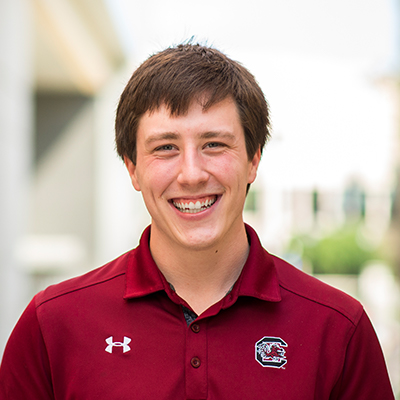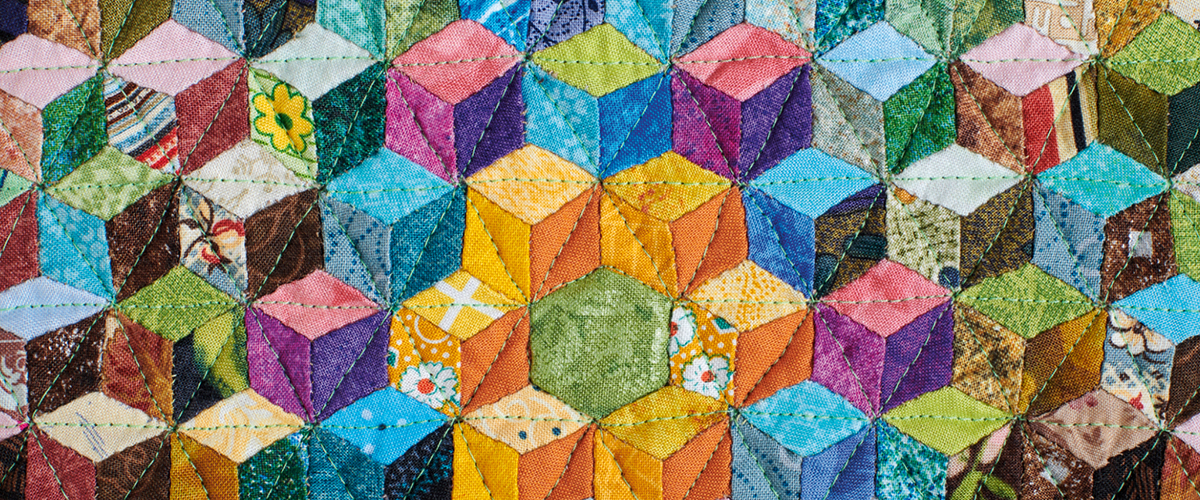News
Math Worth Doing
When faculty member Jen Munson and her team launched an ambitious new website to support local elementary school math teachers during the pandemic, they never dreamed they’d be reaching teachers from 65 countries on six continents.
But the visually rich images featured on the site offer a universal language, or at least a tantalizing starting point. As Munson has found, when students get to talk about what they see—and can connect math to their lives— the learning unfolds.
Multiplicity Lab, as the website is called, gives students and teachers “math worth doing” and infuses teaching with learning sciences and math education. The name comes from its expansive approach: doing math involves multiple ideas, voices, and strategies and different ways of seeing, thinking, and being.
The website launched in February 2021, almost a year into the COVID-19 pandemic; today it has more than 13,000 users world- wide and over 100,000 page views. The team’s YouTube channel has seven videos and counting.
Although Munson crafted the site mainly for elementary school math teachers, she soon heard from high school teachers like Brooklyn’s Thomas Rodney, who adapted the content for his 10th-grade geometry class.
Rodney hadn’t seen the faces of many of his students in his online class—just black rectangles. But when he used a Multiplicity Lab routine to discuss the concept of congruence, “like magic, the video cameras came on,” Munson says. “Rodney’s sophomores were eager to share things they’d found around their homes. It changed his year.”
How Multiplicity Lab works
The goal is to make math visible. Teachers are given two routines to kick off rich and relevant math discussions. In the one called “Look-Think-Talk,” teachers show students an intriguing image, such a sewer cover or an aerial shot of tulip fields, and ask, “What patterns do you see? What do you wonder?”
The second routine, called “Off You Go,” uses a classroom or school scavenger hunt format to connect math ideas with the students’ lives. The students are shown an image of a familiar concept, such as a circle, the number 10, or a pattern. Then they look for other examples of it—at home, outside, in the classroom. Students might take pictures, draw sketches, bring objects to show, or make lists.
“What’s needed is the conversation about the image and what the child brings back to you,” Munson says. “You don’t have to have the mathematical expertise to just sit in a position of wonder with a child.”
The team
Munson, assistant professor of learning sciences, is a former math coach and elementary and middle school teacher. She cowrote the Mindset Mathematics K–8 curriculum series and In the Moment: Conferring in the Elementary Math Classroom, a professional text for teachers. Her lab members include SESP learning sciences doctoral students Sarah Larison and Mari Altshuler and under- graduates Daniel Ro and Trent Zhang.
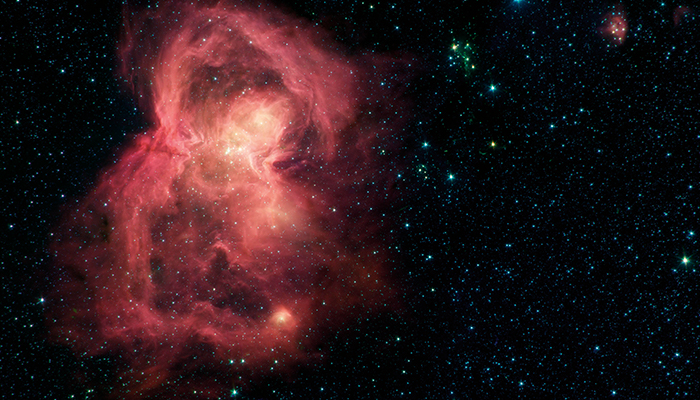
Trautvetter to Help Probe the Universe's Deepest Mysteries
Professor Lois Trautvetter is part of a new cross-disciplinary fellowship program that brings astrophysicists and social scientists together to grapple with data from a massive sky survey.
The LSST Corporation, a nonprofit consortium of approximately 30 research institutions, established the LSSTC Catalyst Fellowship with funding from the John Templeton Foundation to support early-career astrophysicists and social scientists. Starting in the fall, five astrophysics postdoctoral fellows will study big data generated from the soon-to-be-completed Vera C. Rubin Observatory in Chile.
By including social scientists, researchers can figure out “the best ways to recruit and retain a diverse scientific workforce for projects involving multiple fields and chart the course for the next decade,” says Trautvetter, professor of education and social policy and director of the Master of Science in Higher Education Administration and Policy program.
The LSSTC Catalyst Fellowship is the first of its kind. Researchers from disparate fields—including those from traditionally underrepresented groups and institutions—will converge to pursue an integrated, multidisci- plinary approach to science. The Rubin Observatory will create the first-ever deep-space multicolor movie of the southern sky.
Trautvetter earned bachelor’s and master’s degrees in chemistry–and patented inventions in the coatings and resins industry–before getting a doctorate in higher education administration. She researches faculty and professional development, diversifying engineering education, and holistic college student development.
Both Trautvetter and Northwestern astrophysicist Vicky Kalogera serve on the new program’s steering committee. Kalogera is the committee cochair and Trautvetter is also a member of the program’s Senior Social Science Team with colleagues from the Universities of Washington, Arizona, and Illinois at Urbana-Champaign.
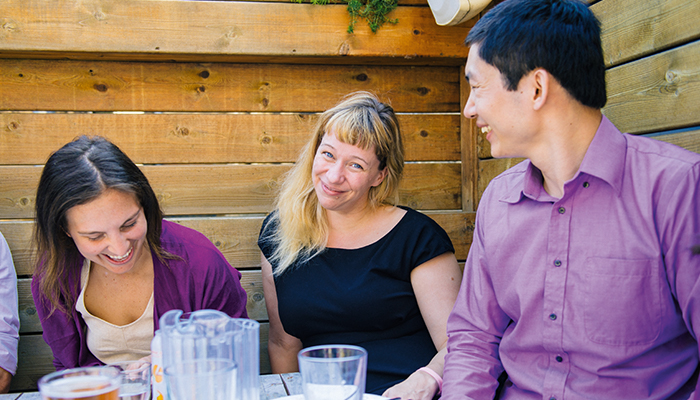
Hold Back on the Bickering
Couples who share moments of humor and affection and who sync up biologically—like the proverbial two hearts beating as one—enjoy better health prospects and live longer than their more quarrelsome counterparts, according to new research coauthored by associate professor Claudia Haase.
The findings, published in the Journal of Personality and Social Psychology, are based on laboratory observations of 154 middle-aged and older married couples as each held intimate conversations about a conflict in their relationship.
“We focused on those fleeting moments when you light up together and experience sudden joy, closeness, and intimacy,” says study coauthor Robert Levenson, a professor of psychology at the University of California, Berkeley. “Having these brief shared moments, known as ‘positivity resonance,’ is a powerful predictor of how healthy we’re going to be in the future and how long we’ll live,” he adds.
Haase was a postdoctoral fellow with Levenson at Berkeley before coming to Northwestern. She is part of a new generation of multidisciplinary researchers who study emotions as they happen.
By using methods like facial coding, physiological monitoring, and neuroimaging, she’s emerging as a leader in the burgeoning field of affective science, where she examines the relationships between emotions and marital conflict, aging, health, and more.
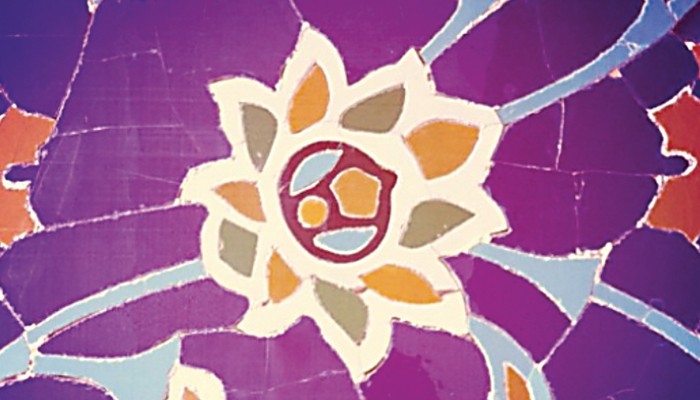
Zines for Teaching
Learning scientist Shirin Vossoughi recently launched bluedandelion.org, a home for zines (self-published, noncommercial online publications) that she calls “an experiment in the learning humanities” and a “sketchpad” for ideas and collaborations among teachers, researchers, and artists.
The name “Blue Dandelion”—depicted on the website in a mosaic from Ardebil, Iran—stems from the flower that holds a special place in Vossoughi’s heart. Her late father, a teacher and political activist in Iran before he brought his family to the US, taught her to “see dandelion seeds as signs of radical hope and unpredictable possibility.”
A political and literary newsletter he developed with fellow displaced Iranians had the dandelion as its symbol. “Dandelions are sometimes thought of as weeds. Yet they grow everywhere and offer nourishment and medicine,” she says. “This is one of the ways I see learning.”
In addition to Vossoughi, the educators, artists, and researchers (including SESP graduate and undergraduate students) who cocreated the first set of zines are Gerald Daye Jr., Meg Escudé, Sarita Garcia, Silvia Inés Gonzalez, Stephanie Jones, Hyohee Kim, Sahibzada Mayed, Natalie Melo, Allen Moore, Shai Moore, Arturo Muñoz, Alexis Papak, and Michael Zang.
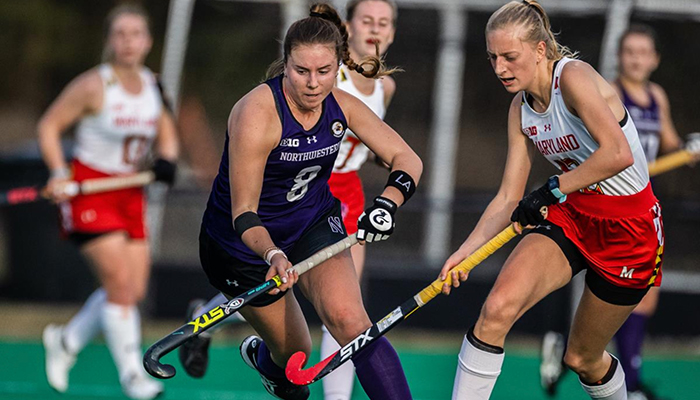
Zimmer leads 'Cats to National Title
Undergrad Maddie Zimmer was named NCAA Tournament Most Outstanding Player after leading Northwestern to its first-ever national championship in field hockey last November. Zimmer had one of two goals in Northwestern’s 2–0 win over Liberty University. (Liberty is coached by Nikki Parsley [LOC14], who says, “I use field hockey to teach life!”)
With an NCAA title under her belt, Zimmer headed to Santiago, Chile, for January’s Pan American Cup with the US women’s national team where she competed with and against some of t e best players in the world. She comes from family of athletes: her mom Erin, an All-American in field hockey and lacrosse at the College of William and Mary; her dad, Scott, was an All-American soccer player at the University of Richmond. Her favorite sports quote? “Great moments are born from great opportunities,” from Herb Brooks, the coach of the 1980 US Olympic hockey team.
In Brief
